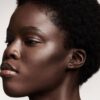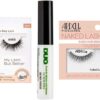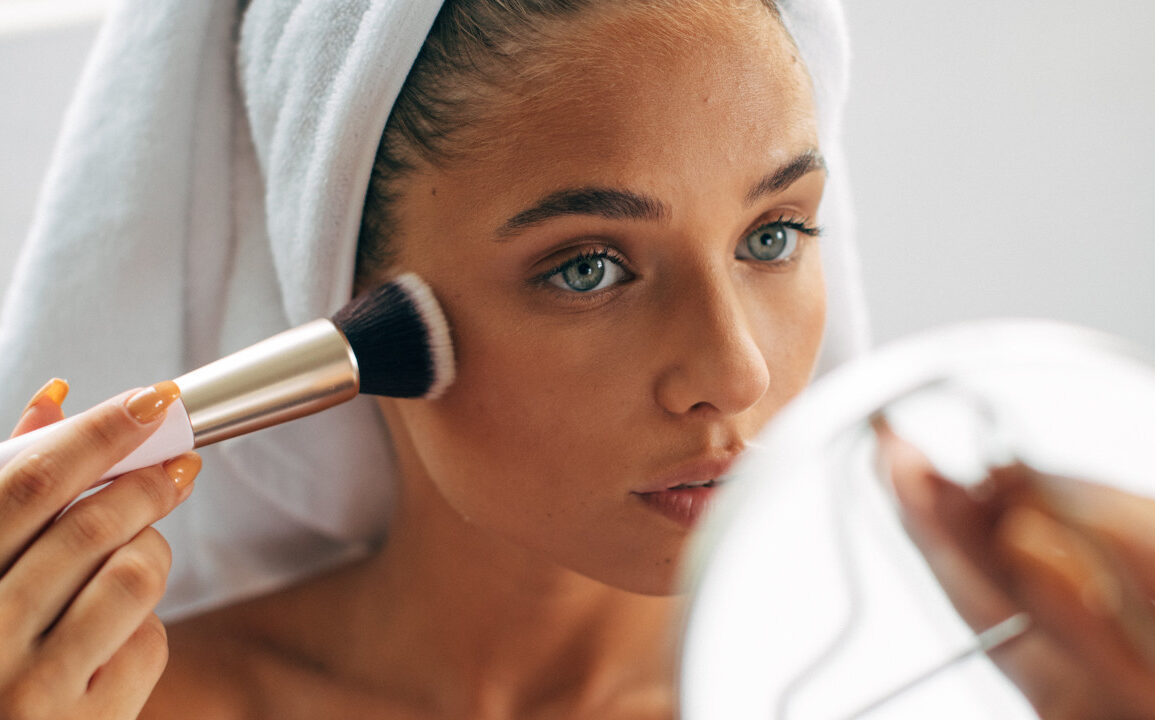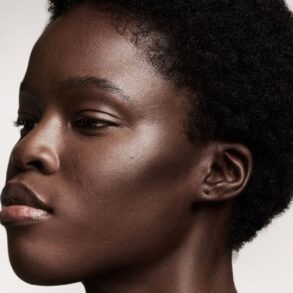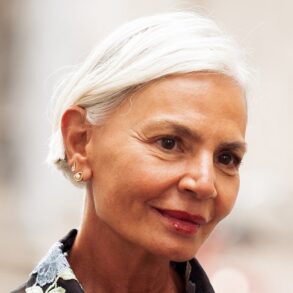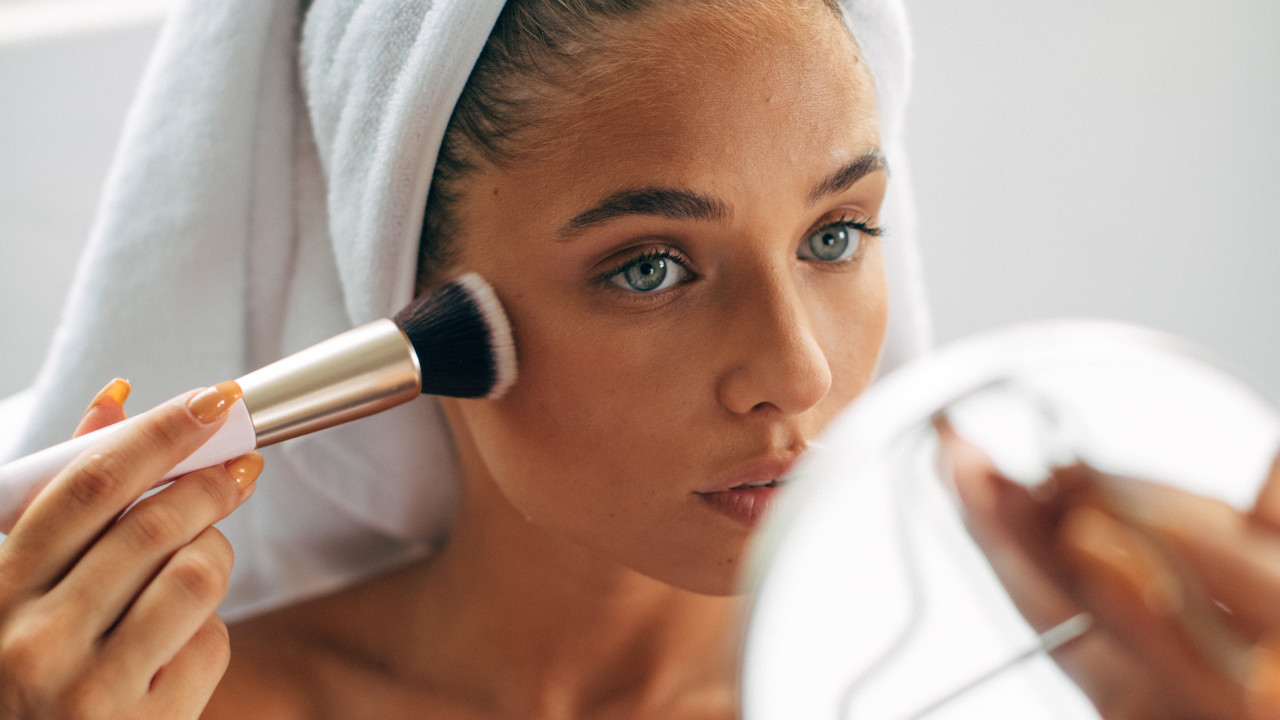
It has happened to all of us. We’re trying on a dress that looked stunning on the hanger, but we’re not feeling as confident wearing it for some reason. Is it the seemingly universal lack of flattering lighting in store dressing rooms? Or will this outfit still look out of place no matter where you wear it? Chances are that if the outfit’s color clashes with your natural coloring, yes, it will look unflattering, even if the lighting is perfect.
This is where the color wheel and color theory come in. The color wheel serves as an essential tool in various creative disciplines, including art, design, fashion, and makeup. Think of how the change in colors of different seasons transforms nature into a breathtaking canvas, giving the harmonious color combinations the ability to evoke excitement, joy, and even melancholy in us. Similarly, when it comes to fashion and appearance, the color wheel can act as a helpful guide to create color combinations that will accentuate your features. On the other hand, not using the color wheel to your advantage often leads to choosing colors that make you look dull, tired, washed out, or like there’s just something missing, no matter how great your outfit fits you.
While the color wheel provides a structured framework for comprehending color relationships and harmonies, a particularly intriguing concept within the realm of color theory is categorizing colors into four distinct “seasons,” each unique in its characteristics. These seasons – spring, summer, autumn, and winter – reflect specific color palettes and can profoundly influence your choice of clothing and makeup, allowing you to accentuate your features and even make some imperfections such as dark circles, a sallow complexion, redness, blotchiness, and skin texture appear less prominent.
This concept is beautifully presented by award-winning stylist Francesca Cairns (@imageconsultantmaidenhead) in an Instagram video where she contrasts the impact of a color that conflicts with her season against one that harmonizes, clearly demonstrating the transformative power of color theory. In her video, we can see how the dullness, sallowness, and even dark circles instantly brighten up and reduce in prominence with the right color.
So, basically, if you have ever noticed that certain eyeshadow hues make your hazel eyes – a color often underrated for its unique charm – appear more striking, it’s all down to the fascinating power of color theory.
But the funny thing about this is that when we do our makeup, we often gravitate toward shades we like and not necessarily the ones that look the best on us. The reason for this is that we have not yet discovered the magic of understanding our season and what colors belong there. We simply assume that if we don’t like that color, it won’t suit us.
So, to free ourselves from the bonds of our color insecurities and embrace our unique characteristics, let’s take a closer look at each season’s unique characteristics and color palettes.
Applying Makeup According To Your Seasonal Color Palette
Understanding your season’s complementary colors can not only highlight your complexion but also accentuate your features and make all the right ones, such as your eyes, pop, while making the not-so-ideal ones, such as dark circles and blemishes, disappear.
Here’s a detailed explanation of the four seasons’ color palettes and how to best complement your natural coloring to achieve a harmonious, put-together look.
Spring
Those belonging to the season that signifies the start of the color wheel typically have saturated and neutral to warm features. Springs might have a light, medium, or dark complexion, but the undertone and natural hair color will usually have red underlying pigments with colors like copper, auburn, and medium or dark brown, with reddish undertones being more common for this season than gray.
Your eye color can also range from blue, green, and topaz to hazel, amber, and dark brown, but due to the warm undertones, you might notice a sunburst pattern of a warmer shade on the iris.
The colors of spring are bright, fresh, and energetic. If you’re in this season, you may notice that the colors of tropical landscapes, bright fruits, newly sprouted leaves, or blooming flowers are the most flattering on you. For example, light, warm tones such as peach, golden yellow, and apricot may be your best summer colors, while soft white or a warm beige might be fantastic neutral colors.
When choosing makeup, springs should opt for foundations and concealers with neutral, peachy, or golden undertones with some yellowness.
Now, while a bronzer isn’t a typical spring product, it can be used by this season in moderation, as many bronzers can be intensely rich and warm, which may end up looking dull and heavy on you. To avoid this, look for peachy and golden colors rather than bronzy or burnt oranges.
When choosing blush, opt for peachy pink and coral shades, and make sure your blush is yellow and not blue-based, as that might appear too cool and ashy on you.
For eye makeup, pick your neutral shades in creams, grays, taupes, and champagnes, but if you want a pop of color, you may very well try experimenting with bright greens, oranges, cyan-blue, and orchids.
And finally, for lipstick, you can opt for warm pinks such as coral pink, peach, and apricot, which will look lovely on you. Some other flattering shades for your season are mango, peachy pink, warm rosewood, and warm brick red if you want bolder options.
Summer
Belonging to the season nestled in the heart of the color wheel, the summer palette is soft, cool, and often muted. Those who fall into the summer category typically have neutral to cool features, with complexions ranging from light to dark, but with a common thread of underlying cool hues, such as pink, blue, or purple tones. Additionally, if you have deep or dark features but are generally lighter for your ethnicity, you would be considered a summer.
When it comes to your natural hair color, it may vary from blonde, ash-toned brunette, and cool-toned brown, but you generally lack warm red or golden undertones, making your complexion more ashy.
Your eye color can vary from blue, blue-gray, green, or even hazel, but the shade will pull more toward green because it won’t have that burst of warm color that makes hazel eyes appear warm brown.
When it comes to clothing colors, yours are reminiscent of the seaside, soft clouds, and gentle pastels. This is why cool-toned colors such as powder blue, dusty pink, lavender, periwinkle, mauve, and silver gray and neutrals such as taupe, cool beige, and dove gray are usually more flattering on you.
When choosing makeup, you should always opt for foundations with cool undertones in shades that match your skin tone perfectly to avoid looking overly ashy. Avoid products with warm undertones, as these can make you look orange.
When it comes to blushes, you should gravitate toward pink shades, such as powder pink, rose, candy, and mauve pink, to achieve a natural flush without adding too much warmth to your complexion, as this can overpower your features, especially if you’re pale.
When figuring out which eyeshadow may best complement your features, try muted and cool colors, such as creams, grays, taupes, and browns, and avoid bright and warm eyeshadow colors that will clash with your complexion.
Choose a lipstick that’s in the rose family, similar to your blush, and you will get a perfect balance between your hair color, eye color, complexion, and the shade of your lips. If you feel like experimenting with a bold lip color as a summer, try complementing your appearance with a darker mauve or plum shade.
Autumn
The autumn season is characterized by warm and earthy tones, unlike warm and tropical tones, which is the case for those in the spring season. Another difference between autumn and spring warmth is that those in the former typically have warm but slightly more muted features than those in the latter. This means that if you have a warm-toned hair color, it is more likely to be coppery red, golden blonde, or a warm brunette with reddish or bronze undertones.
Similarly, your complexion may also range from light to deep and will typically have a peachy, golden, or bronzy undertone. Your eyes can be blue, especially if your features are more muted, but are typically on the rich, warm green, hazel, dark brown, or warm black side.
Your best colors will be reminiscent of autumn and include warm, rich hues reflecting the changing colors of leaves or the golden sunlight during this season. Think spicy mustard, deep olive green, warm brown, burnt orange, brick red, and rich neutrals such as caramel, chocolate, and cream.
As an autumn, you will also look best using foundations and concealers with golden or warm undertones, and bronzers are definitely made for you, as they will enhance your natural warmth and make you look sun-kissed.
For blushes, opt for warm peach, coral, or terracotta shades that will give you a natural flush without overpowering your features.
When choosing eyeshadows, try warm and rich shades, such as copper, olive, cedar green, brown, and gold tones to make your eyes pop. Avoid black and icy colors, as these are too harsh and too cool for your warm features.
Finally, you can’t go wrong with peach, coral, salmon, paprika, terracotta, and brick red lip colors, as these will complement your natural warmth perfectly.
Winter
Much like the season itself, the winter color palette is bold, vibrant, and saturated. This means that while you typically have cool undertones like blue or pink, they will be the opposite of your summer counterparts. For example, while summers have muted and soft features, with powdery blues being more suitable, winters are high contrast and striking, with deep and vibrant blues making their features pop.
This also means that your hair color will likely be white or platinum blonde, medium or dark brown with cool undertones, or jet black with no signs of warm or reddish tones, while your eyes may range between dark, cool hazel and olive, along with dark brown and black.
Your skin tone may range from the fairest of the fair to deep and dark but will typically have cool or sometimes neutral (with a pull towards cool) undertones.
Your clothing colors are jewel-toned or icy bright with high contrast. This means that if you fall into this category, your best colors are those that reflect the winter season, such as royal blue, deep purple, icy pink, and emerald green, along with intense, stark neutrals, such as black, charcoal gray, white, or navy blue.
When it comes to makeup, you should choose foundations and concealers with a neutral to cool undertone, as these will make your natural contrast stand out and neutralize any warmth or redness in your complexion.
Your blush choices should be icy pink, cool plum or berry, and rose or mauvy shades to achieve a natural flush while staying true to your color palette.
As a winter, you should stay away from bronzers or use them in moderation, as they can overwhelm your delicate features by adding too much warmth to your coloring.
When it comes to eyeshadows, you can opt for cool and jewel tones like sapphire blue, emerald green, ruby red, silver metallics, and deep purples to add that pop of color on a neutral base consisting of stormy or charcoal grays, inky blue-blacks, and navy blues.
For your lips, you should choose bold and vibrant colors that will add to the intensity of your features. Think cool, striking pinks, purples with plum undertones, and cherry or cabernet reds for special occasions.
Determining Your Color Season
Determining your color season may sound complicated and frustrating at first, but can actually be a fun learning experience that will help you understand why a dress or an eyeshadow in your favorite color doesn’t flatter you and what you should replace it with to achieve maximum impact.
A great way to determine your color season is by analyzing the dominant characteristics of your skin tone, eye color, and natural hair hue. You can do this by examining your skin’s undertones and whether they are cool (with hints of blue or pink), warm (with yellow and peach), or neutral (which is a mixture of both.)
Now, shift your focus to your eyes and examine whether they have the striking brightness of spring, the soft, cool hues of summer, the vibrant warmth of autumn, or the high contrast of winter.
Finally, your natural hair color will also play a significant role in determining your season. As a rule of thumb, cooler hair shades often indicate a summer or winter season, while warmer tones suggest that you’re likely a spring or autumn. Remember, it’s about your natural colors, not the ones you’ve dyed or the tan you’ve acquired.
Once you’ve identified these elements, you can cross-reference them with the characteristics outlined in each season’s profiles to discover your color season.
However, all this might be more obvious to some women and can help them determine their color season easily, while others may require additional help due to the unclear or overlapping characteristics of their skin, eye, and hair colors. In such cases, you can always consult an expert color analyst who can help you accurately identify your color season and provide personalized recommendations on the colors that suit you best.
Not being able to determine your season by yourself doesn’t mean that you don’t belong anywhere or are stuck wearing colors that don’t suit you or accentuate your features in all the right ways. In fact, it’s quite the opposite. Your unique color profile might be a mix of two seasons or what’s known as a sub-season. This means certain colors from different seasons might suit you better, while some from your main season may not be as complimentary. While confusing and maybe a little frustrating at first, this gives you a wider range of colors to choose from, making your style more versatile and fun.
Closing Thoughts
Determining your color season may seem like a daunting task, but the excitement of finding out what colors suit you best so that you can finally get rid of the ones that don’t is truly an unmatched feeling of accomplishment and an important step in understanding and learning how to love the features you never knew how to accentuate.
Whether you are a warm autumn, an icy cool winter, a soft summer, or a vibrant spring, there is a color out there that will make you glow and bring out the best in you. Granted, this might not be your favorite color or one that you typically gravitate toward when shopping for a new blush or creating an elaborate eyeshadow look, but, hey, isn’t learning something new about yourself and embracing it what life is all about anyway?
Support our cause and help women reclaim their femininity by subscribing today.
This post was originally published on this site be sure to check out more of their content.


